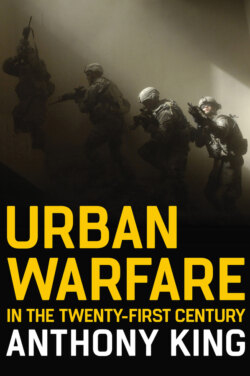Читать книгу Urban Warfare in the Twenty-First Century - Anthony King - Страница 15
The Decline of Mass Armies
ОглавлениеDuffy’s thesis about numbers is particularly pertinent to the question of urban warfare in the early twenty-first century because military forces are smaller now than they have been for centuries. Since the 1970s – and especially in more recent decades – large, state, Western forces have all but disappeared; the mass citizen army, which was the norm during the twentieth century, has been displaced by smaller all-volunteer forces. Military scholars began to note this important transformation of Western armed forces in the 1970s. By that point, some Western forces had already begun to abolish conscription.26 Following the Cold War, conscription and the mass army became increasingly obsolete, so that by the 2010s, all major Western powers had abolished national service. As a result, Western forces have declined to about half or a third of their Cold War size (see Table 2.1). After the end of the Cold War, the active-duty US Army, for instance, contracted from 700,000 to 480,000 personnel and it is set to contract further. It is true that some European countries, such as Sweden, have recently reintroduced limited conscription, but these selective drafts in no way reverse the general trend.
Table 2.1: Army size (active service personnel), 1991–2019
*The italicised figure includes the DDR’s Nationale Volksarmee
Source: International Institute for Strategic Studies, The Military Balance 1991; International Institute for Strategic Studies, The Military Balance 2019.
American and European commentators have often worried about this reduction of state forces. Yet, in fact, the trend is global. China and Russia have both displayed the same pattern. Indeed, with the collapse of the Soviet Union, Russia’s Army is now proportionately far smaller than its Western rivals. In 1991, the Soviet Army consisted of 1.4 million active soldiers and a reserve of a further 2.75 million. Today, the Russian Army fields 280,000 personnel, of whom 195,000 are regular professionals; it is approximately 20 per cent of its Cold War size.
Because of the objective decline in troop numbers, states have necessarily deployed much smaller forces on recent operations than in the twentieth century. They simply cannot mount mass operations anymore. This is even true for the IDF. Although the IDF remains a large conscript force, which has apparently maintained its size since 1991, only small elements of it were ever deployed on Israel’s recent campaigns.27 During the First Lebanon War of 1982, 78,000 troops were deployed. By contrast, 10,000 Israeli troops fought in the Second Lebanon War of 2006; only in the very last few days of the war, after a series of defeats, did the IDF increase the deployment to 30,000.28 Similarly, Operation Cast Lead against Hamas in Gaza in 2008 also involved a relatively small ground deployment of about 10,000 troops. If Duffy’s thesis is correct, then the reduction of combat densities on the battlefield should be expected in and of itself to increase the frequency of urban fighting. Reduced state forces necessarily converge on cities and towns.
